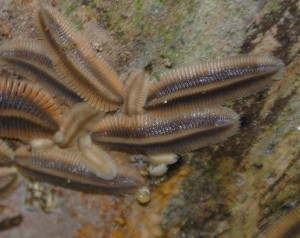Dr. Shear has returned from the rain forest of Costa Rica, where he and the MITS team spent a week collecting millipedes at La Selva Biological Research Station, one of the facilities of the Organization for Tropical Studies. La Selva is located in lowland/piedmont rain forest on the Caribbean slope and provides facilities for researchers working on tropical ecology, systematics and evolution. While in Costa Rica, the team visited other preserves in Costa Rica, including Volcan Tenorio, near the Nicaragua border. The MITS project, financed by a NSF grant to Auburn University, Hampden-Sydney College, Virginia Tech and the Field Museum of Chicago will construct the first phylogenetic tree of millipedes using next-generation sequencing data. As many as 100 species will have their transcriptomes completely sequenced, giving us thousands of genes to work with. In addition, data on the chemical defenses of millipedes will be mapped on the tree. Preliminary results obtained by Dr. Shear in collaboration with Dr. Tappey Jones of the Chemistry Department at VMI record for the first time the chemistry of the defensive secretions of all millipede orders.
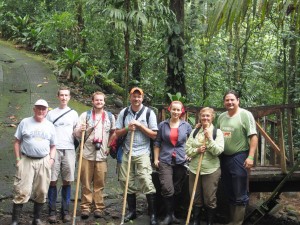
The MITS team includes (L to R) Dr. Shear, Dr. Paul Marek and grad student Jackson Means (Virginia Tech), Dr. Jason Bond and grad student Rebecca Godwin (Auburn), Dr. Petra Sierwald (Field Museum) and Carlos Viquez (INBio).
The picture below shows a species of Platydesmus, a common millipede under tree bark at La Selva. This is the only genus of millipedes known to show subsocial behavior. The young are brooded and cared for by the males.
We found the tarantula (Psalmopoeus sp.) below in a tube on a tree trunk.
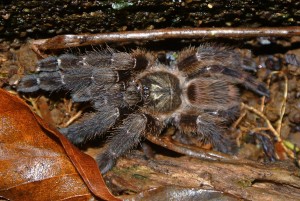 One of the biggest millipedes we captured was Nyssodesmus python, about four inches long and 3/4 inch wide. This species is found throughout Central America.
One of the biggest millipedes we captured was Nyssodesmus python, about four inches long and 3/4 inch wide. This species is found throughout Central America.
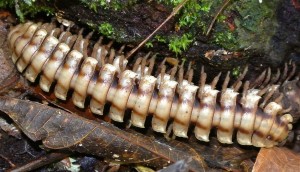 One of our goals was to get live material of the genus Epinannolene, since the defensive chemistry of the whole suborder has been worked out only for one species, which produces a molecule that is new to arthropods. As you can see below, we got plenty!
One of our goals was to get live material of the genus Epinannolene, since the defensive chemistry of the whole suborder has been worked out only for one species, which produces a molecule that is new to arthropods. As you can see below, we got plenty!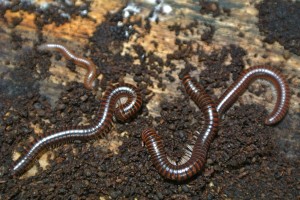
The picture below shows the Strawberry Poison Frog, very common at La Selva. The frogs are poisonous to touch, but do not produce their own poison. Instead, they eat ants that contain toxic alkaloids and transfer them to their skin. Frogs raised in captivity on other insects are not poisonous.
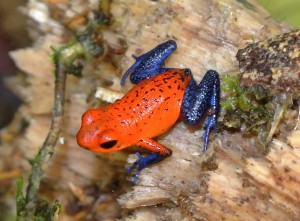 The trip was highly successful and sequencing is proceeding in the labs at Auburn. Oh, and jaguars did not really rip my flesh. That was just to get your attention.
The trip was highly successful and sequencing is proceeding in the labs at Auburn. Oh, and jaguars did not really rip my flesh. That was just to get your attention.

